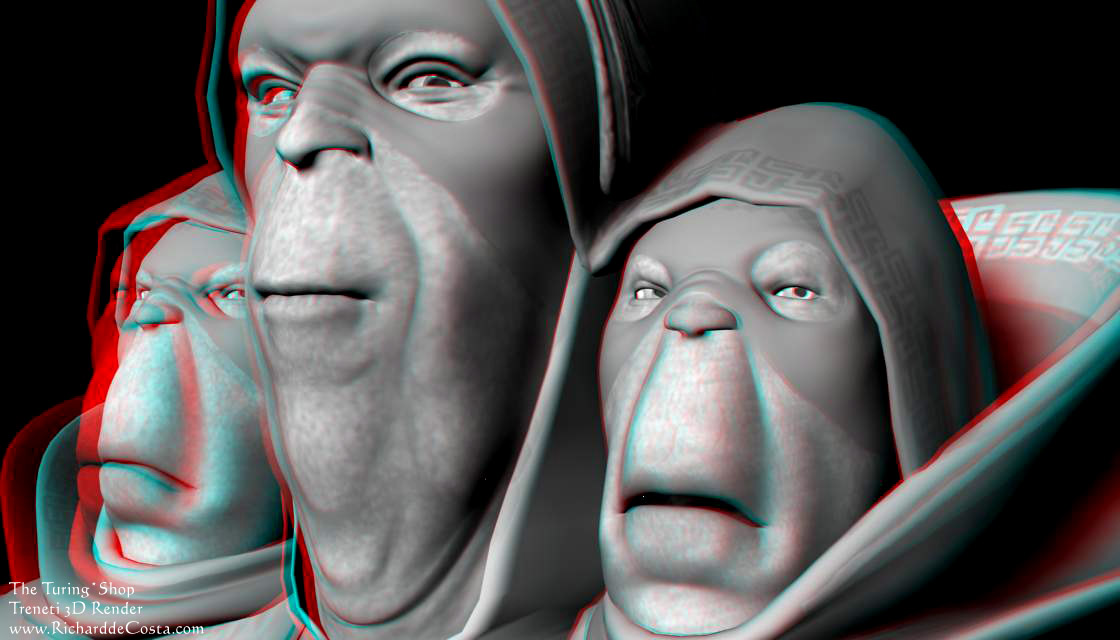The company I worked with call themselves “The Motion Pixel Company”.
One of the partners, and my direct supervisor at the time, Harris Milam was a guy who had worked in stage, television graphics and various kinds of stereoscopic work for entertainment events. My first day on the job I spent a lot of time talking with him about 3D. He had many examples, including printed anaglyph, viewmasters, lenticular displays etc. I learned more in that conversation than I have ever learned about stereoscopic before or since.
Our working method was to use a pair of cameras in 3DS Max, both linked to a parent dummy, seperated by three units and converging on a point 36 units in front of them. Each time a scene was completed it would be rendered twice, once from each camera, producing two sequences of frames that recorded the identical action and time frame, with slightly diffrent perspectives. The movies would then be combined with a program written by the other partner, which would enable the movie to be previewed, in-house, on an ordinary television, while we edited the video using premiere.
The in house display system was a crystal eyes 3D viewing system. A pair of glasses with liquid crystal lenses which switched the lenses opaque alternating the left eye and right eye. This system was tied in to the video signal, so that the alternating opacity was synchronized to the field signal of the TV.
Lots of people today talk about progressive frames as if it makes a video any clearer, but old style televisions achieve something more like 60 frames per second by projecting the image as alternating fields. The TV projects horizontal row 1, then skips 2, projects 3, skips 4 and so on, until it reaches the bottom, and then goes back and projects the alternate fields that it skipped during the first pass. We used the alternate fields to present the two camera views in the same video signal.
Once editing was finished we told premiere to reference each source movie in turn, and rendered them. The edited, full-frame movies were then projected with polarized filters in our venue, The Children’s Museum of Houston. The color is excellent beyond anything you get from an anaglyph, of course.
The discussion I had with the boss on the first day was enough to teach me to make anaglyphs, cross-eyed and wall-eyed stereograms for home use, which I have been doing ever since, for my own amusement. when I happened upon the previous 3D anaglyph thread my glasses were right here on my keyboard. I’ve also been looking into lenticular and holographic marketing materials for my coming graduation. I believe I have a method for making holograms from CG.






